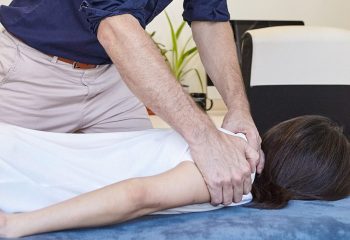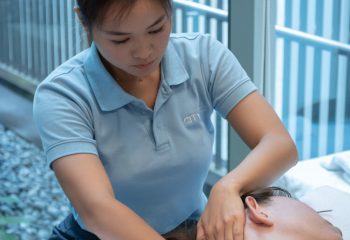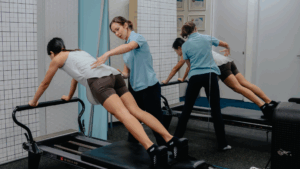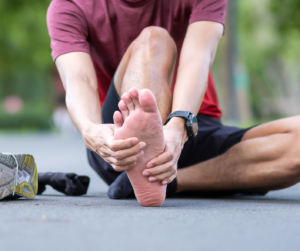Just given birth and feel like your belly has gotten a bit more separated than usual? Have you noticed unexplained cramps and bulging whenever you’re going through certain physical activities? Then it might be time to find out if that could indicate something called Diastasis Recti.
Diastasis Recti is a condition where the abdominal muscles separate, creating a gap between them. It can be caused by pregnancy, but it can also happen during other times in life. Depending on the severity of the separation, Diastasis Recti can cause various health issues such as difficulty standing up straight, back pain and even hernias.
Luckily, this condition is easy to identify. A physical exam by a women’s health expert can quickly detect the gap between the abdominal muscles and help determine the severity of Diastasis Recti. Treatments are also available by experienced women’s health professionals, which means you will not need to live with this condition for long.
If you’re wondering what Diastasis Recti is or how to approach it, we’ve got the answers here!
First and foremost…
What is Diastasis Recti?
Diastasis Recti is the separation of the rectus abdominis, or ‘six-pack’ muscles in your abdomen. This gap can cause bulging and hernias and can lead to back pain and difficulty standing up straight.
This condition is most commonly seen in women who have recently given birth, but it can also affect men and women who are overweight or have undergone abdominal surgeries.
While this gap can cause a noticeable bulge in the abdominal area, the severity of the separation can vary from person to person. In some cases, the gap will be small and barely noticeable, while in others, the gap can be significant and require medical intervention.
In addition to causing a noticeable bulge, Diastasis Recti can also lead to back pain, poor posture, and even hernias. This is because the abdominal muscles are responsible for supporting the spine and the internal organs, and when the muscles separate, this support is weakened.
Fortunately, Diastasis Recti can be diagnosed through a physical exam by a women’s health specialist. During this exam, the specialist will assess the severity of the separation and recommend treatment options based on the individual’s needs.

How do you know if you have Diastasis Recti?
Symptoms of Diastasis Recti can vary from person to person. However, the most common symptom is a visible gap in the abdominal area. Other symptoms include:
- A bulging or “doming” of the abdominal muscles when you sit up or engage in physical activity.
- Back pain, especially in the lower back.
- Poor posture or difficulty standing up straight.
- Muscle weakness in the abdominal area.
While there are several home checks that claim to diagnose Diastasis Recti, it’s important to note that these checks may not always be accurate. Additionally, some of these checks can actually worsen Diastasis Recti or cause other health problems. Therefore, seeking the opinion of a women’s health specialist is recommended.
How to cure Diastasis Recti?
Treatments for Diastasis Recti can vary depending on the severity of the condition. In some cases, exercises that focus on strengthening the abdominal muscles can help to close the gap and alleviate symptoms. Other treatments may include wearing a special abdominal binder or undergoing surgery to repair the separation.
Treatment methods for Diastasis Recti
Diastasis Recti is best determined by a women’s health specialist. A specialist can assess the severity of your condition and recommend exercises, lifestyle changes, or surgical treatments that may help to reduce your symptoms.
City Osteopathy & Physiotherapy’s very own women’s health physiotherapy team are well-equipped in assessments and providing individualised treatment plans that are tailored for each patient.

Our physiotherapists may use orthopaedic, neurological and other system examinations to help assess and diagnose your condition.
During your visit, our specialists will observe your posture and ask you to perform some simple movements to help assess how your body is functioning, why you are experiencing your symptoms and the severity of your Diastasis Recti condition. Your past medical history, occupation, exercise regime, and any other factors which may affect your overall wellbeing, are also taken into consideration.
Our treatment methods are safe, gentle and effective approaches, using hands-on techniques to diagnose and treat your condition. We employ a wide range of techniques such as stretching and massage for treating soft tissues (muscles, tendons and ligaments), along with mobilisation or manipulation. We can also use instruments such as ultrasound therapy, and may even prescribe exercises to help you speed up your recovery process. Ultimately, we aim to relieve pain, discomfort and immobility, allowing you to return to your previous mobility, functions, and physique.
So if you think you may have Diastasis Recti, don’t hesitate to make an appointment with our team of specialists – we’re here to help!
Can Diastasis Recti heal on its own?
It’s possible for Diastasis Recti to heal on its own. However, it can take time and most cases require treatment from a women’s health specialist. Additionally, some people may be more prone to developing this condition than others due to their lifestyle or body type, and some may also be prone to the worsening of this condition if left untreated. Therefore, seeking professional help is recommended in order to assess the severity of your condition and to provide you with the best treatment plan.
Can losing weight help Diastasis Recti?
Losing weight can help Diastasis Recti in some cases, but may worsen the condition if done incorrectly. It’s important to work with an experienced women’s health specialist who can provide you with a safe and effective diet and exercise plan that will not further exacerbate your symptoms.
How long does it take for Diastasis Recti to heal?
The amount of time it takes for Diastasis Recti to heal varies from person to person. Generally, healing can take anywhere from weeks to months depending on the severity of the condition and how strictly you adhere to your treatment plan. With the right approach and professional guidance, you should be able to reduce or even eliminate symptoms within a few months.
Diastasis Recti can be a troublesome condition if it’s left untreated, so make sure not to procrastinate getting help as soon as possible to avoid it worsening and taking longer to heal.
When is Diastasis Recti considered closed?
Diastasis Recti is considered closed when the abdominal muscles are at least 50% of their pre-pregnancy state or before the surgery/injury. This can be measured through physical examinations and imaging tests by a specialist.
It’s important to bear in mind that treating Diastasis Recti can be a process and may require a bit of patience and dedication. Recovering from this condition may not be linear, meaning that symptoms may improve, worsen, or stay the same over time. It all depends on various factors, such as the severity of the condition, adherence to the treatment plan, and lifestyle changes. Therefore, it’s crucial to work closely with your women’s health specialist to keep track of your progress and adjust your treatment plan if necessary. With the right approach and guidance, you can substantially reduce or even eliminate your symptoms and improve your overall well-being.
FAQs on Diastasis Recti
How to dress with Diastasis Recti?
When dressing with Diastasis Recti, it’s important to dress for comfort, such as opting for clothing that is loose and flowy. It may be recommended to avoid tight-fitting garments such as bikinis, bodycon dresses, or anything that places pressure on the abdomen if that causes you discomfort. Additionally, if recommended by a specialist, you may wish to wear a supportive abdominal binder when necessary – this will help to provide additional support to your abdominal muscles, allowing you to do activities like walking or exercising with less discomfort.
Is rowing machine bad for Diastasis Recti?
The rowing machine can be beneficial for people with Diastasis Recti, as it helps to strengthen your core muscles – one of the key aspects of treatment. However, it’s important to note that not all exercises are suitable for this condition and some exercises (such as crunches or sit ups) may even worsen the symptoms. Therefore, before doing any form of exercise, it’s best to consult with your women’s health specialist and obtain permission. They can provide advice on which exercises are safe for you to do and which ones should be avoided.
Can a Diastasis Recti reopen?
Yes, a Diastasis Recti can reopen if it’s not treated properly and the abdominal muscles are not healed. It’s important to adhere to your treatment plan in order to prevent further damage and reduce the risk of reopening. Also, be sure to take breaks when necessary – too much activity can put a strain on your abdominal area and cause the condition to worsen.
Can Diastasis Recti cause bowel problems?
In some cases, Diastasis Recti can cause bowel issues due to the weakened state of the abdominal muscles. Symptoms such as constipation or difficulty passing stools can occur as a result of this condition, so if you experience any of these symptoms it’s important to seek medical advice from your doctor or women’s health specialist.

We are here to support your Diastasis Recti recovery journey
In conclusion, Diastasis Recti is a condition that affects many women, particularly those who have recently given birth. While it can cause discomfort and lead to health problems, there are treatments available to help alleviate symptoms and restore proper abdominal muscle function.
If you’re experiencing Diastasis Recti or other postnatal conditions such as urinary incontinence or breastfeeding issues, you don’t have to go through it alone. We are here to support your recovery journey after pregnancy and help restore your abdominal muscles’ proper function. Our team of women’s health physiotherapy experts specialise in diagnosing and treating this condition, providing personalised recovery plans to fit your needs and goals.
Don’t let Diastasis Recti hold you back from living life to the fullest. Book an appointment today to learn more about our services and how we can help you on your journey to recovery!










